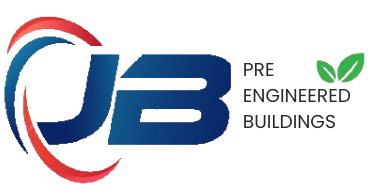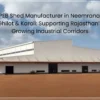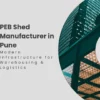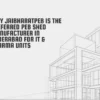Customization in PEBs: Tailoring Structures to Meet Unique Client Needs
TL;DR: Customization in PEBs allows businesses to design pre-engineered buildings that perfectly fit their unique needs, from warehouses to retail spaces. Tailoring structures ensures functionality, cost-efficiency, and aesthetic appeal for diverse industries.
Introduction: Why Customization in PEBs Matters
Imagine a business owner, Sarah, who needed a warehouse that could double as a showroom. Off-the-shelf buildings didn’t cut it—her vision demanded unique dimensions, specific insulation, and a modern facade. That’s where customization in PEBs (pre-engineered buildings) comes in, transforming standard structures into tailored solutions.
PEBs are steel buildings designed and fabricated off-site, then assembled on location. Customization in PEBs: tailoring structures to meet unique client needs ensures these buildings align with specific operational, aesthetic, and environmental requirements. Whether it’s a factory, retail store, or agricultural facility, customized PEBs deliver flexibility and efficiency. Let’s explore how this process works and why it’s a game-changer for businesses.
What Are Pre-Engineered Buildings (PEBs)?
PEBs are steel structures built using pre-designed components, making them faster and more cost-effective than traditional construction. Unlike conventional buildings, PEBs are engineered in factories, allowing for precision and scalability.
- Key Features: Modular design, lightweight steel frames, and quick assembly.
- Benefits: Reduced construction time (up to 50% faster), lower labor costs, and durability.
- Example: A 10,000-square-foot PEB warehouse can be erected in weeks, not months.
Customization in PEBs ensures these advantages are enhanced to meet unique client needs, such as specific layouts or branding requirements.
Why Customize PEBs?
Why settle for a generic building when you can have one designed for your exact needs? Customization in PEBs: tailoring structures to meet unique client needs allows businesses to optimize their spaces.
- Operational Efficiency: Tailored layouts for machinery, storage, or workflows.
- Aesthetic Appeal: Branding through colors, facades, or glass panels.
- Sustainability: Energy-efficient insulation or solar-ready roofs.
- Compliance: Meet local regulations or industry standards.
For example, a food processing plant might customize its PEB with hygienic wall panels and climate control, ensuring compliance with FDA standards while maximizing storage.
How Does the Customization Process Work?
Customizing a PEB involves collaboration between clients and manufacturers. Here’s how it happens:
- Needs Assessment: Clients outline their requirements—size, purpose, and special features.
- Design Phase: Engineers use software to create 3D models, incorporating custom elements.
- Fabrication: Components are manufactured with precision in factories.
- Assembly: On-site teams erect the structure, often in weeks.
This process ensures that customization in PEBs: tailoring structures to meet unique client needs is seamless and efficient.
What Tools Are Used for PEB Customization?
Modern technology drives PEB customization. Tools like Building Information Modeling (BIM) and CAD software allow for precise designs.
- BIM: Creates 3D models to visualize the final structure.
- CAD: Ensures accurate measurements for custom components.
- Simulation Software: Tests structural integrity under various conditions.
These tools help manufacturers deliver buildings that perfectly align with client specifications.
What Industries Benefit from Customized PEBs?
Customized PEBs serve a wide range of industries, each with unique needs:
- Manufacturing: Large, open spaces for heavy machinery.
- Retail: Modern facades and customer-friendly layouts.
- Agriculture: Barns or storage units with ventilation and insulation.
- Logistics: Warehouses with optimized loading docks.
For instance, a logistics company might customize its PEB with extra-wide doors and automated racking systems, boosting efficiency.
Can PEBs Be Customized for Extreme Environments?
Yes! Customization in PEBs: tailoring structures to meet unique client needs includes adapting to harsh conditions.
- Cold Climates: Insulated panels and heating systems.
- Hot Climates: Reflective roofs and ventilation.
- Seismic Zones: Reinforced frames for earthquake resistance.
A mining company in a desert, for example, might use a PEB with heat-resistant coatings and dust-proof seals.
How Does Customization Impact Costs?
Customization doesn’t always mean higher costs. While tailored features may increase upfront expenses, they often save money long-term.
- Efficiency Gains: Optimized layouts reduce operational costs.
- Durability: High-quality materials extend building lifespan.
- Energy Savings: Insulation or solar panels lower utility bills.
Data shows customized PEBs can reduce energy costs by up to 30% compared to traditional buildings.
Are Customized PEBs Sustainable?
Sustainability is a key advantage of customized PEBs. Tailoring structures allows for eco-friendly features:
- Recyclable Materials: Steel is 100% recyclable.
- Energy Efficiency: Insulated walls and cool roofs.
- Solar Integration: Pre-designed mounts for panels.
A retail chain might customize its PEB with skylights and LED lighting, cutting energy use significantly.
What Are the Aesthetic Options for PEBs?
Gone are the days of dull, boxy buildings. Customization in PEBs includes aesthetic enhancements:
- Exterior Finishes: Brick, glass, or wood cladding.
- Color Schemes: Match corporate branding.
- Interior Design: Open ceilings or partitioned offices.
A car dealership customized its PEB showroom with floor-to-ceiling glass walls, creating a sleek, modern look that attracted customers.
How Long Does It Take to Build a PEB?
Speed is a hallmark of PEBs. Customization doesn’t slow things down much:
- Standard PEB: 6–12 weeks from design to completion.
- Customized PEB: 8–16 weeks, depending on complexity.
A customized retail PEB, for example, can be ready faster than a traditional build, letting businesses open sooner.
What Are the Limitations of PEB customization isn’t always a one-size-fits-all solution?
While highly flexible, PEBs have limits:
- Customization: Complex architectural designs may require additional engineering.
- Site Constraints: Uneven terrain can complicate assembly.
- Budget: Premium features add costs.
Manufacturers work with clients to balance customization with functionality and affordability.
Customization in PEBs – Frequently Asked Questions
What does customization in PEBs mean?
Customization in PEBs refers to designing pre-engineered buildings to meet specific client needs, like unique layouts or aesthetic features. See “Why Customize PEBs?”.
How much does it cost to customize a PEB?
Costs vary based on size, materials, and features. Basic customization may add 5–20% to standard costs, but long-term savings offset this. See “How Does Customization Impact Costs?”.
Can PEBs be customized for residential use?
Yes, PEBs can be tailored for homes, with insulation, windows, and modern finishes. They’re less common but viable.
Can PEBs be customized for residential use?
Yes, PEBs can be tailored for homes, with insulation, windows, and modern finishes. They’re less common but viable.
Are customized PEBs environmentally friendly?
Absolutely. Features like recyclable steel and energy-efficient insulation make them sustainable. See “Are Customized PEBs Sustainable?”.
How long does it take to customize a PEB?
Customized PEBs typically take 8–16 weeks, depending on complexity. See “How Long Does It Take to Build a PEB?”.
Can PEBs withstand extreme weather?
Yes, customization allows for features like reinforced frames or heat-resistant coatings. See “Can PEBs Be Customized for Extreme Environments?”.
Conclusion: Tailor Your PEB for Success
Customization in PEBs: tailoring structures to meet unique client needs empowers businesses to create buildings that are functional, attractive, and efficient. From warehouses to showrooms, customized PEBs offer unmatched flexibility. Ready to design your dream structure? Share your ideas or explore our guides on PEB design trends or sustainable construction.





